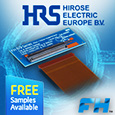Supplier sections
Rate this page
Frequently Asked Questions
Q1. What is covered?
A1. Equipment which is dependent on electric current or electromagnetic fields in order to work properly excluding military, medical and some other control products. Products made specifically for the automotive trade are allowed to contain lead but not the other 9 substances.
Q2. Does the Directive apply to professional equipment?
A2. The RoHS Directive does not differentiate between household or professional electronic and electrical equipment, so products for professional use are covered by the RoHS Directive.
Q3. Does the RoHS Directive apply to batteries?
A3. The RoHS Directive restricts the use of heavy metals in electronic and electrical equipment, but does not apply to batteries.
Q4. Does the RoHS Directive apply to spare parts installed in new equipment?
A4. The Directive does not apply to spare parts for the repair, or reuse, of electronic and electrical equipment put on the market before 1st July 2006.
Q5. What does 'put on the market' mean?
A5. The words 'put on the market' refer to the initial action of making a product available for the first time on the community market. This takes place when the product is transferred from the producer to a distributor or final consumer or user on the Community Market.
'Making a product available for the first time' refers to each individual piece of equipment put on the market after the date for the restrictions (1st July 2006) and not to the launch of a new product or product line.
Therefore, say for instance producer A is manufacturing item ABC, and has done for years, which uses a non-compliant process, he cannot stock pile and put it on the market after 1st July 2006 and hide behind the fact they were WIP made before the deadline.
Q6. Does the substance ban under the RoHS Directive apply to the production process?
A6. It is understood that the substance restriction refers to the final product and not the production process. But, if say for instance lead or cadmium is used as a catalyst within a production process and as a result of this is found in the final product above the prescribed limit, then that product is not compliant.
Q7. Does the substance restriction under the RoHS Directive apply to products built for own use?
A7. The RoHS applies only to products that are put on the market. Products manufactured for own use such as prototypes and development samples are excluded from the scope of the Directive. If subsequently put on the market, they have to comply with the Directive.
Q8. Are maximum concentration values set in the RoHS Directive?
A8. Yes there are, as specified in the RoHS Explained section. These limits refer to homogeneous materials such as plastics, ceramics, glass, metals, alloys, paper, board, resins and coatings. For instance, a semiconductor package contains many homogeneous materials which include: plastic moulding material, tin-electroplating coatings on the lead frame, the lead frame alloy and gold bonding wires. Contrary to general opinion, the materials can be easily identified down to the composition of plating using X-ray techniques on equipment specifically designed for this purpose. It will easily identify levels of lead in plating material down to a few PPM in a matter of minutes. After 1st July 2006 there will be no hiding place for those manufacturers who think they will not be detected.
For specific enquiries, please contact RoHS@anglia.com











































































































































